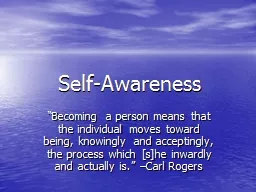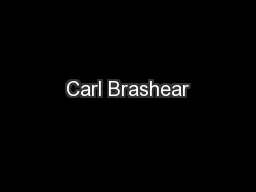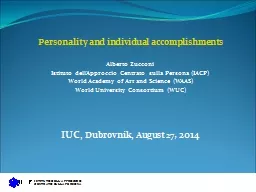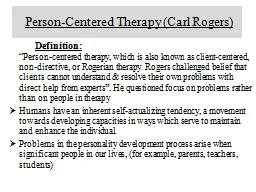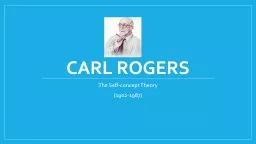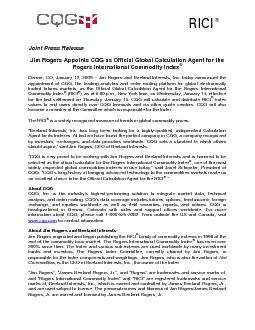PPT-Self-Awareness “Becoming a person means that the individual moves toward being, knowingly
Author : mitsue-stanley | Published Date : 2019-11-04
SelfAwareness Becoming a person means that the individual moves toward being knowingly and acceptingly the process which she inwardly and actually is Carl Rogers
Presentation Embed Code
Download Presentation
Download Presentation The PPT/PDF document "Self-Awareness “Becoming a person mean..." is the property of its rightful owner. Permission is granted to download and print the materials on this website for personal, non-commercial use only, and to display it on your personal computer provided you do not modify the materials and that you retain all copyright notices contained in the materials. By downloading content from our website, you accept the terms of this agreement.
Self-Awareness “Becoming a person means that the individual moves toward being, knowingly: Transcript
Download Rules Of Document
"Self-Awareness “Becoming a person means that the individual moves toward being, knowingly"The content belongs to its owner. You may download and print it for personal use, without modification, and keep all copyright notices. By downloading, you agree to these terms.
Related Documents

